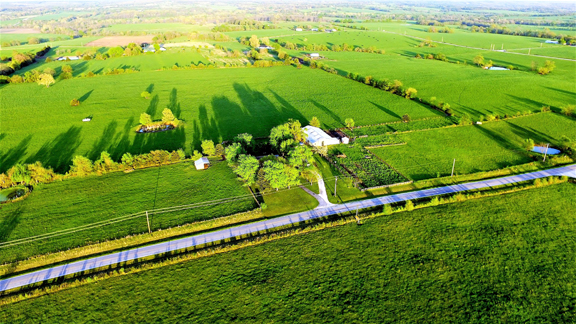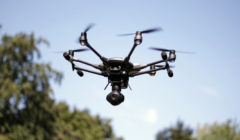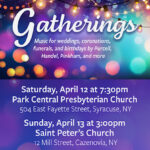Droning On
About a year ago, this column featured a story about the NYS Fair Drone Film Festival, a
relatively new undertaking that aims to bring the wonders of drone filming and films about what drones can do to New York State via the NYS Fair as its showcase.
The field of drone technology has nowhere to go but – up, of course! 
Central New York is a hub of drone activity, largely due to a state program that designated a 50-mile corridor between Syracuse and Griffiss International Airport in Rome, NY, the “Drone Corridor.” Within this corridor, strategic investments will accelerate industry growth by supporting emerging uses of Unmanned Aircraft Systems (UAS) in key industries, including agriculture and forest management, transportation and logistics, media and film
development, utilities and infrastructure, and public safety.
The area was already populated with technology firms that were poised to fly: Raytheon, SRC/
Gryphon Sensors being two you’ll no doubt recognize, but new industries and ventures are
taking off all the time.
NUAIR, The Northeast UAS Airspace Integration Research Alliance, along with 200+ partners, works to advance unmanned aircraft systems research and to accelerate UAS industry economic
development in the region. NUAIR manages operations at one of seven federally-designated UAS test sites in the United States, and is at the forefront of public policy development, commercialization and safe integration of UAS into the National Airspace System.
SkyOp, in Canandaigua, NY, offers comprehensive courses in everything from the basics of drones to certifying and licensing pilots, and is continuing adding to its extensive course list.
Start-up organizations, with seed money from GENIUS NY, is the world’s largest business accelerator for unmanned systems. GENIUS NY awards five drone startups a total of $3 million in investments, and has been instrumental in bringing multiple high-tech, drone-centered organizations to the CNY region.
When we think of “drones,” it used to be a word quickly followed by “strikes.” As with so many technology developments, it did spring from the idea of controlling combat from a distance. The whole concept of a drone is a flight instrument that is “unmanned,” but not “unpiloted.” The pilot controls the device from afar, using video and GPS (and now tethered controls in some cases) to maneuver the drone up, down, sideways, hovering, flying slow or astoundingly fast.
New innovations are adding to the drones’ carrying capacity, flight time, and programming at such a rapid pace that even if you follow the industry it’s difficult to stay current. Drone “swarms” are comprised of tiny drones programmed to fly almost like a “murmuration,” a flock of birds that fly in what appears to be an orchestrated dance. In the case of the drones, it is orchestrated, each drone communicating with the others as well as the programming controlling their pattern and objectives.
What’s most exciting about drones is that, as with many advances first conceived of for combat advantage, smart people quickly saw the ways in which the technology could be put to good purpose – and soon drones were being used to pollinate fruit groves when bees didn’t show up; to find people lost in the woods, or trapped inside a burning building; to manage traffic from above; to transport needed medical and life-saving supplies to people who were otherwise out of reach; and to create art.
Flying shots have long been a staple of filmmaking – think of that long, long tracking shot at the beginning of The Shining, how it follows a car winding its way through the mountains, and sets the tone for the rest of the film to come. Shots like that were once an enormous and expensive undertaking. With a properly equipped drone, these shots can be used to great advantage by filmmakers big and small – there’s even a GENIUS NY project to map a space in 3D so that a filmmaker can plan a shot, hire a local pilot, and watch from afar as his shot is perfectly executed by a camera equipped drone.
The NYS Drone Film Festival, which will be taking place this summer at the New York State Fair on August 25th, each year recognizes top filmmakers in 8 categories, plus a “Best in Show” award —and yes, there is a category for students, so don’t let age or lack of experience deter you!— with medals and a showing of their prize-winning film. Most categories require the majority of the short film to be shot using a drone, but one category is reserved for films about drones – the ways in which drones are being used throughout the world and in so many ways to save money, time, and even lives.
If you’re an amateur or professional drone filmmaker, or you have a story to tell about drones, go to https://filmfreeway.com/NYSDroneFilmFestival for all the details, or visit
www.dronefilmsfest.com.
The entry deadline is July 15, so there’s still time to get your masterpiece recorded. And who knows? You may just win!











